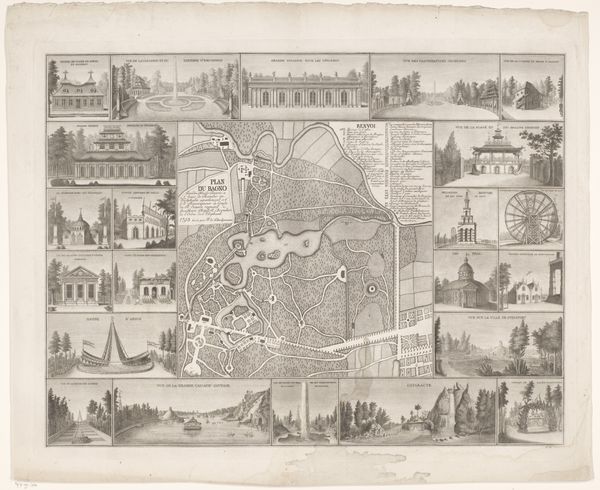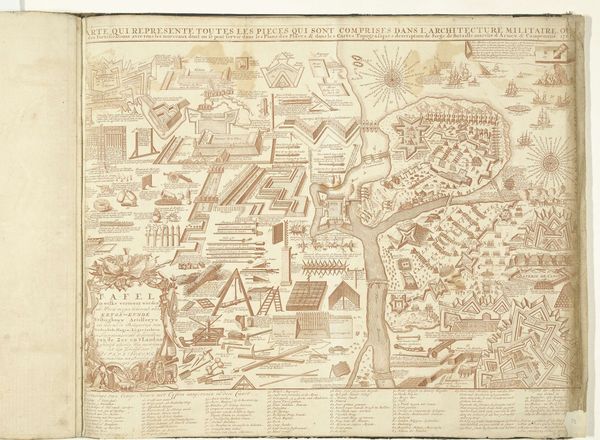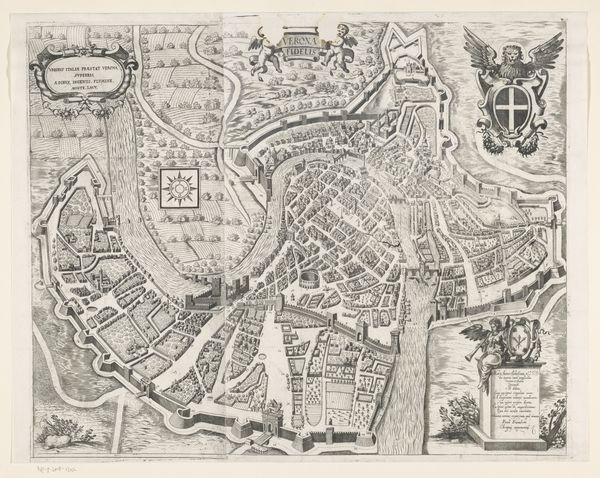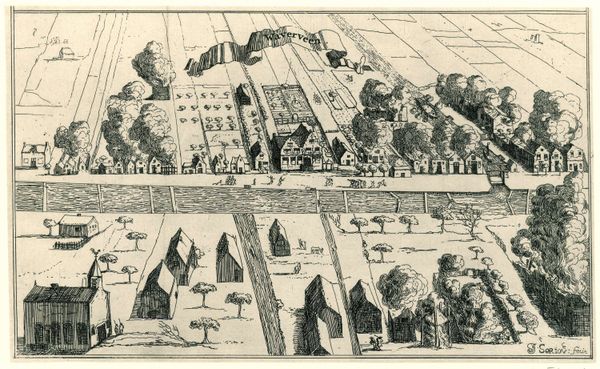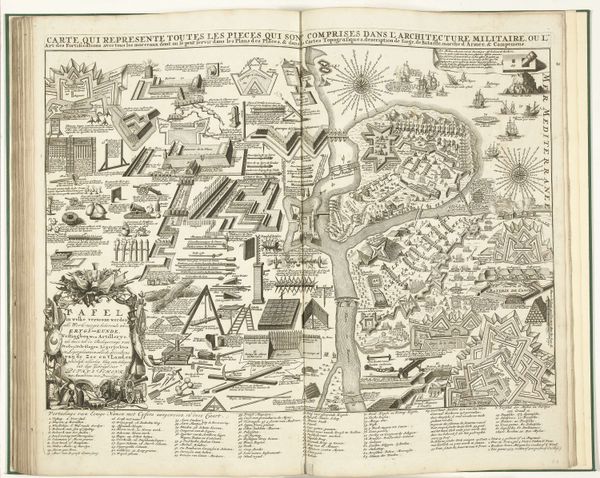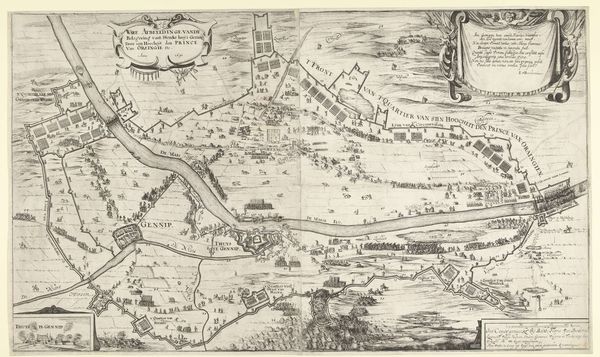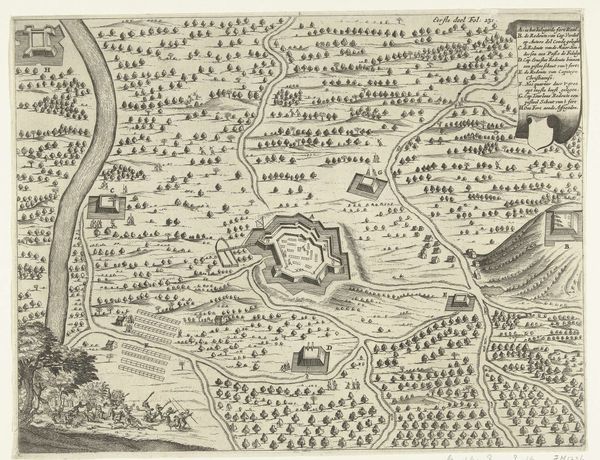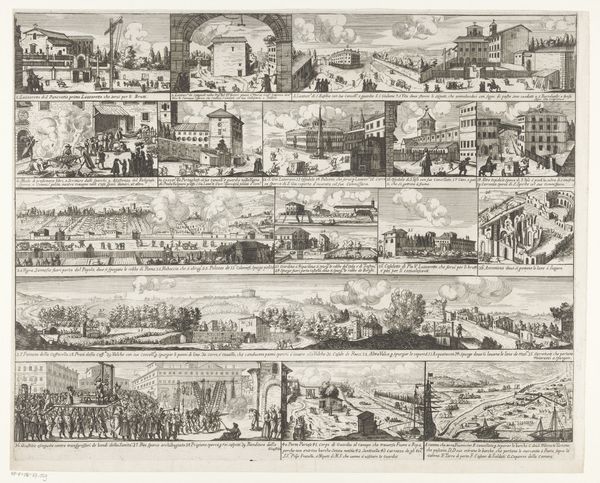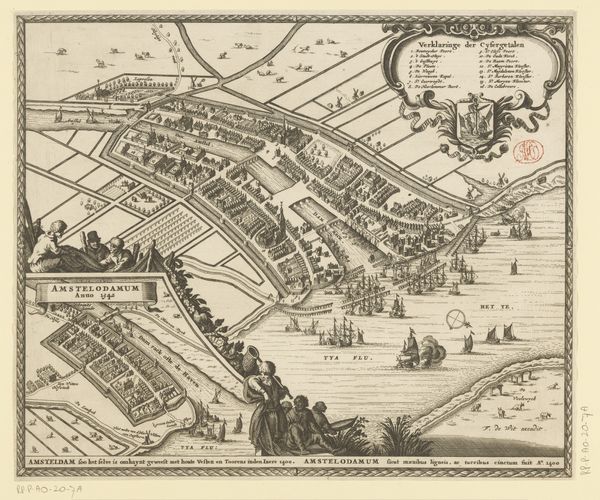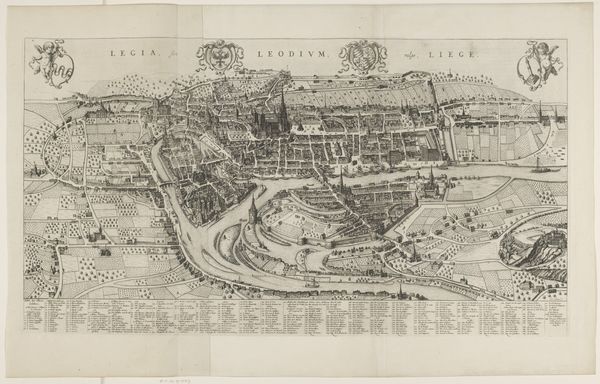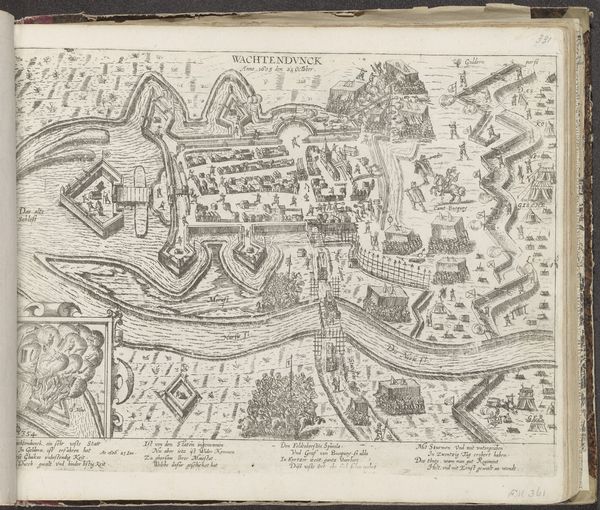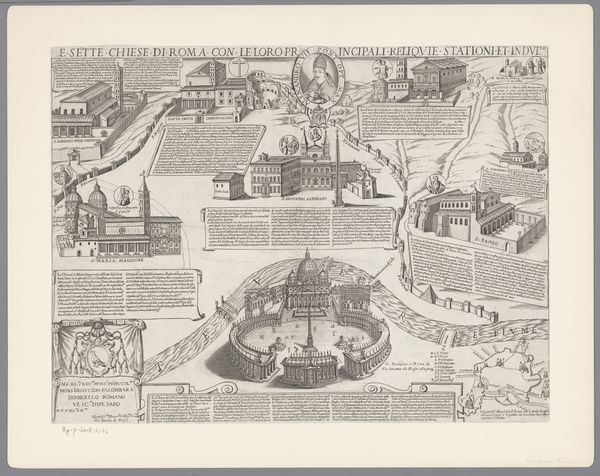
Plan of the Garden and Views of the Dwellings at Chiswick Possibly 1736
0:00
0:00
drawing, print, ink, engraving
#
drawing
#
pen drawing
# print
#
landscape
#
ink
#
geometric
#
cityscape
#
decorative-art
#
engraving
Dimensions: 24 1/8 x 30 1/2 in. (61.28 x 77.47 cm) (plate)25 1/4 x 31 3/4 in. (64.14 x 80.65 cm) (sheet)30 3/8 x 38 1/2 x 1 5/8 in. (77.15 x 97.79 x 4.13 cm) (outer frame)
Copyright: Public Domain
Editor: So this is "Plan of the Garden and Views of the Dwellings at Chiswick," likely from 1736, created by Jacques Rocque. It's a really detailed engraving – I find the almost clinical precision of the garden layout strangely beautiful. How do you interpret this work, seeing past the map-like qualities? Curator: Clinical, yes, but also fantastically aspirational, wouldn’t you agree? Look at the idealized nature, every tree perfectly placed, every path curving just so. Rocque isn't just showing us a garden; he's revealing a worldview. It’s the 18th century obsession with order and reason imposed on the unruly beauty of nature, all pressed onto this engraved print. A miniature cosmos, perfectly controlled. It’s almost unsettlingly perfect, don't you think? Editor: Unsettling is a good word. It's like a dollhouse version of nature, everything miniaturized and… well, a little sterile. Is that typical of garden designs of this period? Curator: Very much so! Think about the Enlightenment and its focus on rational thought. Gardens became a way to demonstrate control, a visual manifesto. It's like they're saying, "We, humans, can improve upon nature, making it even more beautiful through order!" This particular garden embodies wealth, power, and intellectual prowess – it’s about crafting a perfectly harmonious environment, mirroring a perfect society. What do you find most captivating about these early landscapes? Editor: I suppose it’s the sheer ambition of it all. Trying to capture and control nature on this scale seems incredibly bold. It really shows the values of the time, how important structure and visual expression of hierarchy were. It almost makes me feel a little bit… overwhelmed by the amount of thought that was invested. Curator: Overwhelmed but, hopefully, also intrigued. Because isn't it amazing how a simple garden plan can speak volumes about the dreams and desires of an era long gone? What a treat! Editor: Definitely! It's shifted how I will view landscape design going forward. Thank you!
Comments
minneapolisinstituteofart almost 2 years ago
⋮
To the contemporary viewer this meticulous plan of the grounds at Chiswick in west London appears extremely formal, but in the early 18-century Chiswick represented a shift towards a new, more natural-looking garden. The gardens feature curving pathways and picturesque views highlighted by an artificially constructed river and carefully placed statuary and architectural details. Although the complete product of human design, the more informal gardens at Chiswick gave birth to the English landscape movement.
Join the conversation
Join millions of artists and users on Artera today and experience the ultimate creative platform.
